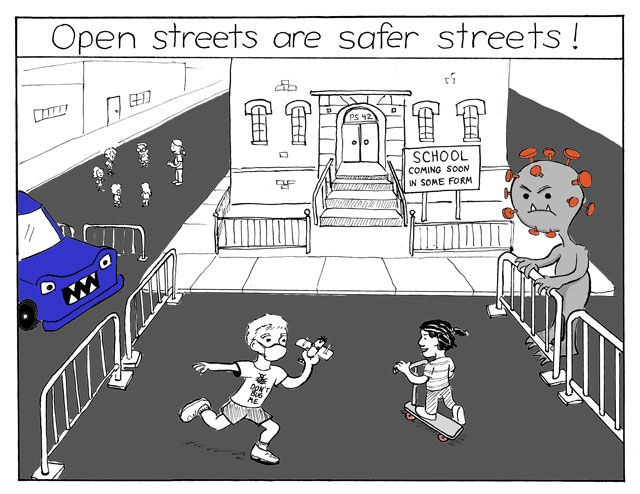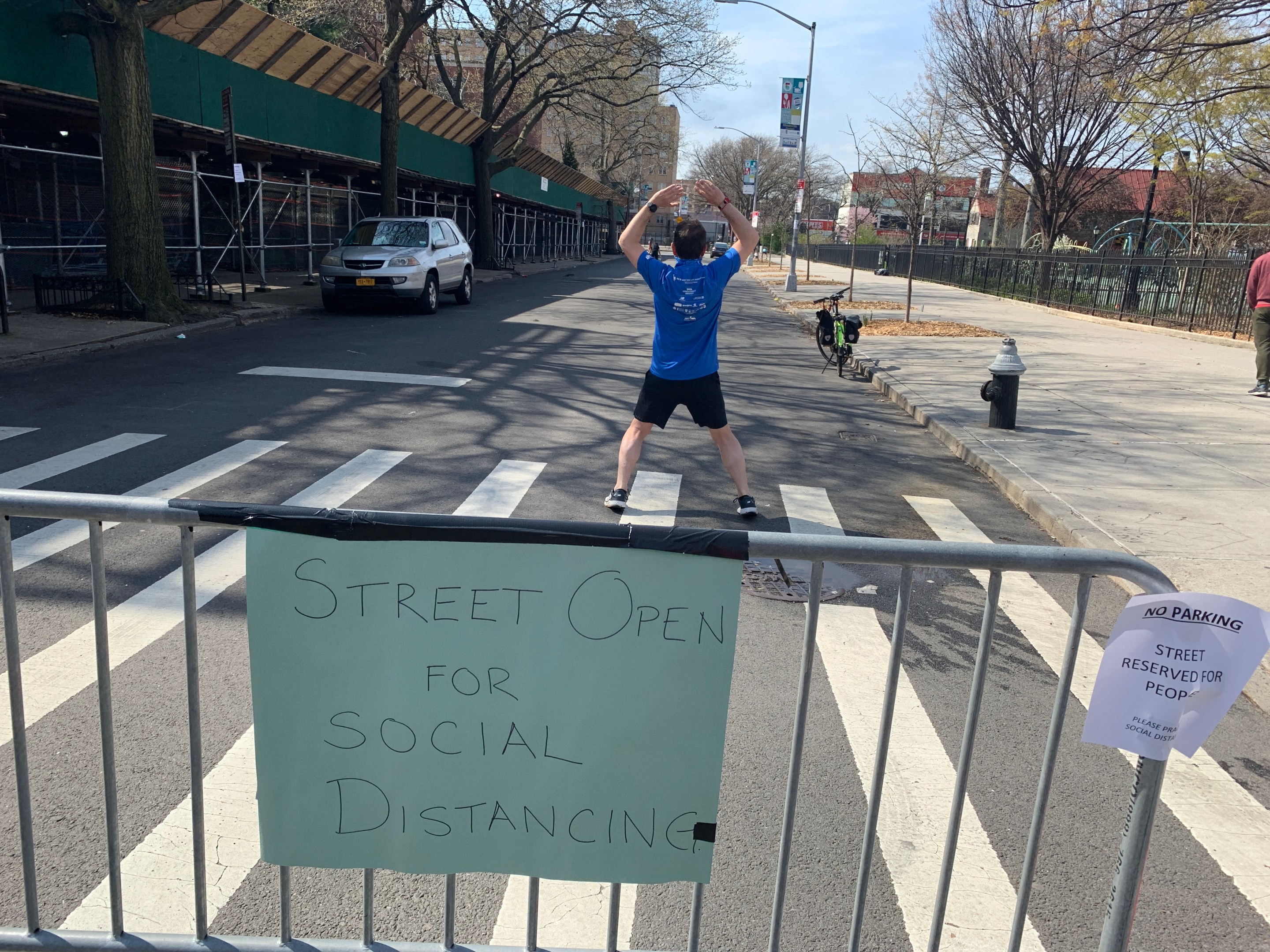Mayor de Blasio this week announced an initiative enabling public schools to take advantage of outdoor spaces — such as parks, schoolyards and streets — as part of in-person reopening plans for the upcoming school year. It’s an exciting step that some schools now can explore outdoors classrooms and schooling. Unfortunately, however, the city's announcement is a day late and many dollars short — and will lead to many communities being left out in the cold.

As parents, advocates and educators have argued for months, outdoor education is one piece of the puzzle of reopening schools. It's not a panacea — but coronavirus infection rates are lower outside, and moving kids outside for classes, special subjects, and meals can lessen the load on our crowded schools. During the flu epidemic a century ago, schools used outdoor classrooms for the same reason.
It's also a real opportunity to expand how we think about schooling. Many educational professionals urge educators to take students outside more often. Kids welcome and come alive in fresh air, and many education models work even in chilly weather.
Moreover, many parents, teachers, and administrators across the city are eager to use our streets, courtyards, playgrounds and parks as an extension of our schools (and students love the idea), including at two elementary schools in District 15 in Brooklyn — PS 15 and PS 39 — where we have served as parent leaders. We've been working with other parents on various efforts to demonstrate outdoor learning, advocate for street closures, and ask for opportunities to use public parks and playgrounds equitably.
The problem with the city’s plan, however, is a familiar one: Schools with copious resources, funds, social capital, and parental time will be able to make the most of it — while schools without those quantities will not. "Some schools" doesn't sound like the "excellence for all" we're striving for in our school system; it sounds like another example of division in student access.
Yes, some schools have parents associations that can raise tens of thousands of dollars to invest in tents and outdoor furniture. But, as we know all too well, others don’t and are focused on making sure their students have enough food to eat and basic school supplies. Finding more money for outdoor tents and equipment feels like a pipe dream.

It's common now for political leaders to observe that the pandemic has exposed the chasm that exists between our city’s wealthier and less-resourced communities. These problems aren't new; they’ve just been exacerbated by the virus.
For outdoor learning to work, it needs real resources — or it will be undertaken at the expense of our most vulnerable students. The city must provide the resources centrally and comprehensively so that schools can seize this opportunity. The initiative may also require the involvement of the city's businesses and philanthropies, which have a vested interest in supporting families and in keeping infection rates low. Without a central source of funding that allows schools to tap into this opportunity, the initiative will be just another program promoting inequality among schools. The city also should marshal its agencies to prioritize these programs equitably — so street closures and park permits aren't granted ad hoc, but are steered to schools with real needs in a timely and transparent way.
The 2020 school year is a time for defining quality education by the people it serves. We must roll out plans and programs that close the gaps among our communities. An announcement without resources isn't a solid program and isn't a real plan.
If it is the responsibility of parents, parents associations and principals to develop a plan and find the necessary funding for outdoor learning, we know what the result will be. Some schools will do fine — and many, many more will lose out.
TENTS SITUATION: Mayor abruptly approves outdoor learning just as ventilation inspections begin, but with NYC schools facing harsh budget cuts, @DOEChancellor encourages schools lacking money for tents to seek assistance from parents in affluent schools. @Biaggi4NY @jessicaramos https://t.co/QaI6vuEau1
— NY BATs (@NYBATs) August 26, 2020
We can talk about parents associations pooling funds. But that's not a real, sustainable way to run our school system. It's great when schools and parents associations, such as PS 15, a 500-student Title 1 school in Red Hook, and PS 39, a 420-student, more affluent, school in Park Slope, can work together. But it is not enough.
New York is beautiful in the fall — so much of what we love about the city comes alive. We wish that our schools had an effective and equitable way to tap into our urban outdoors. Even if the city "plan" is woefully insufficient, though, we'll keep advocating and organizing for our own kids and for every other child.
Cateia Rembert and Justin Krebs lead the District 15 Parents Association Presidents Council. Rembert served as PA president of PS 15 in Red Hook; she's now an MS 839 parent. Krebs is an executive board member of the PS 39 PA in Park Slope.






